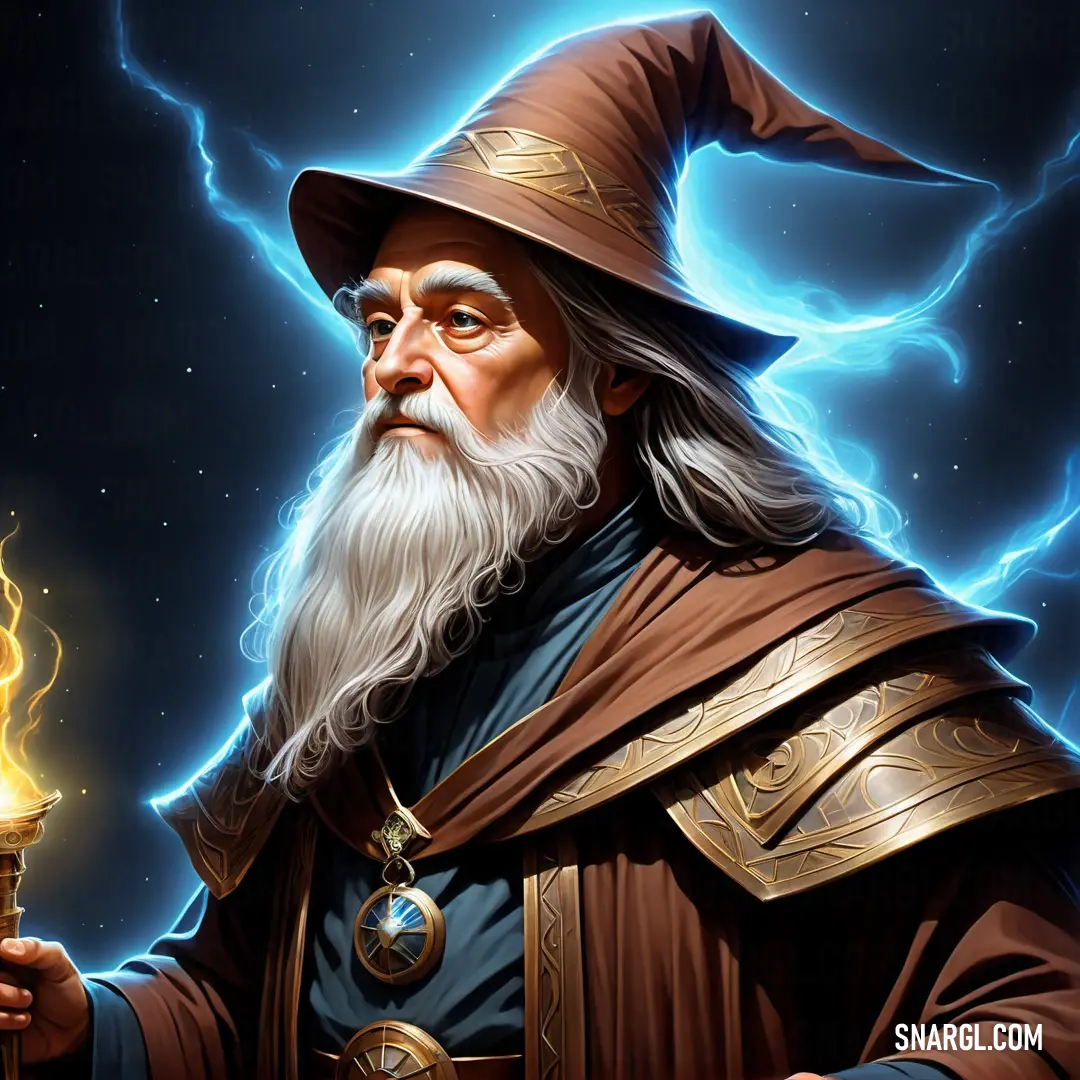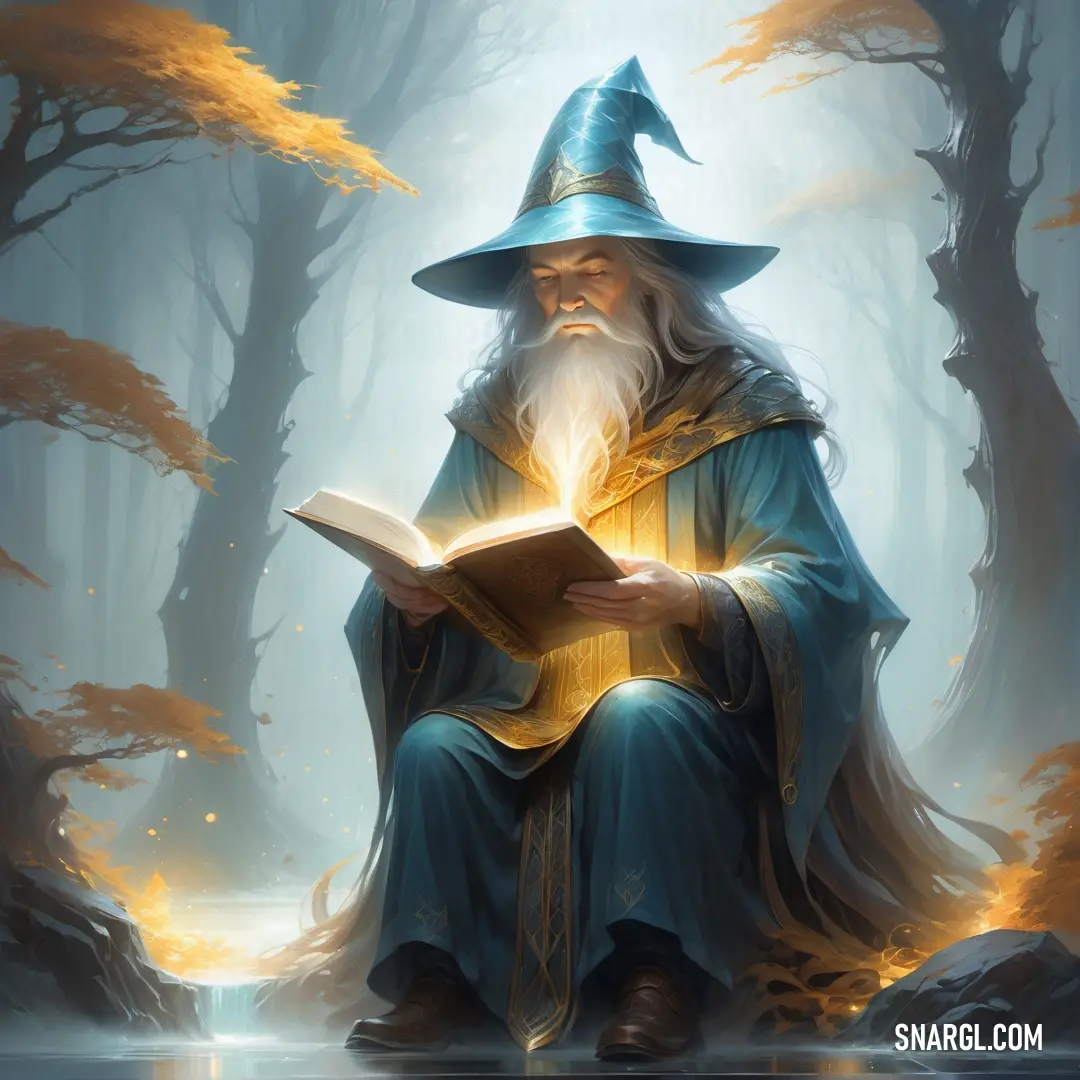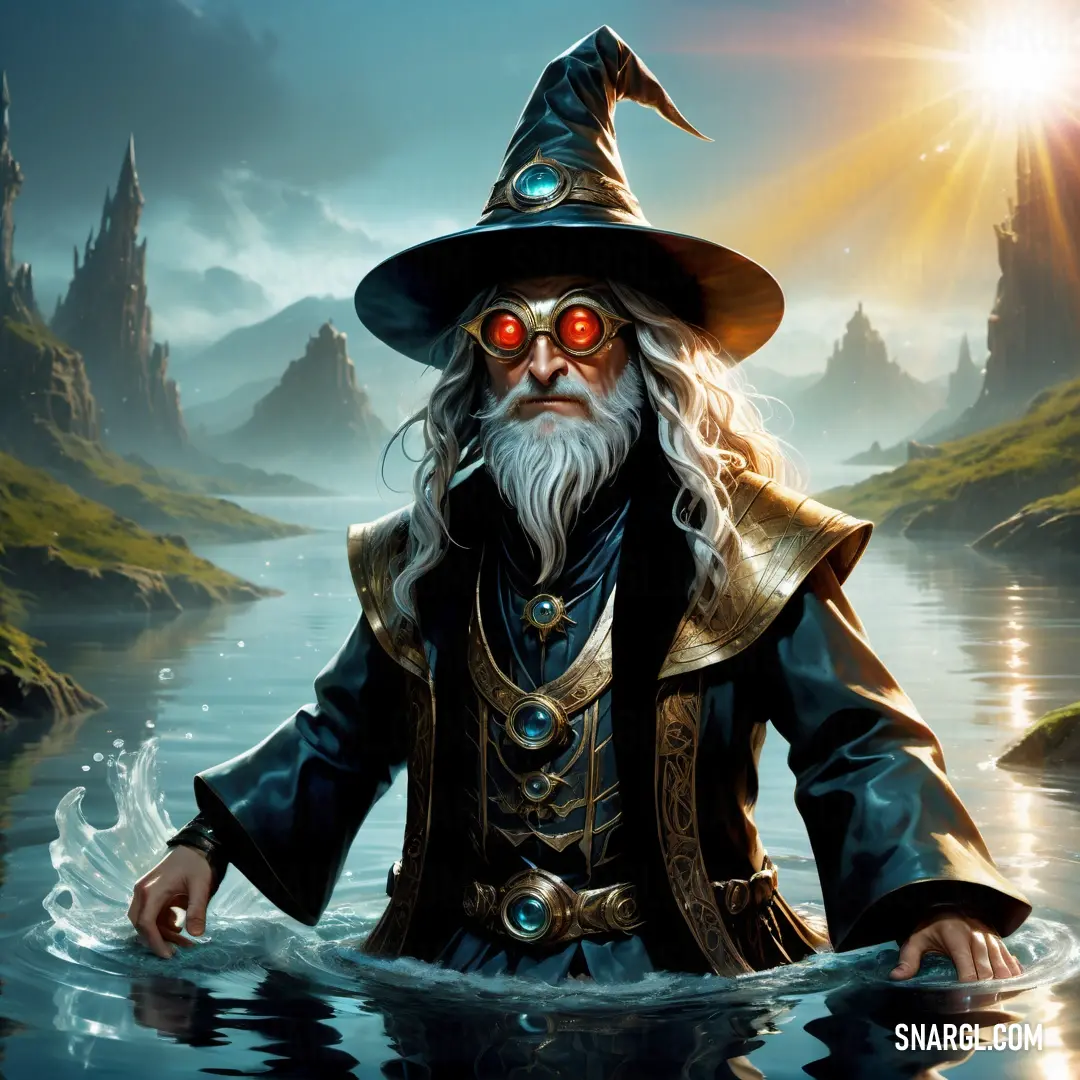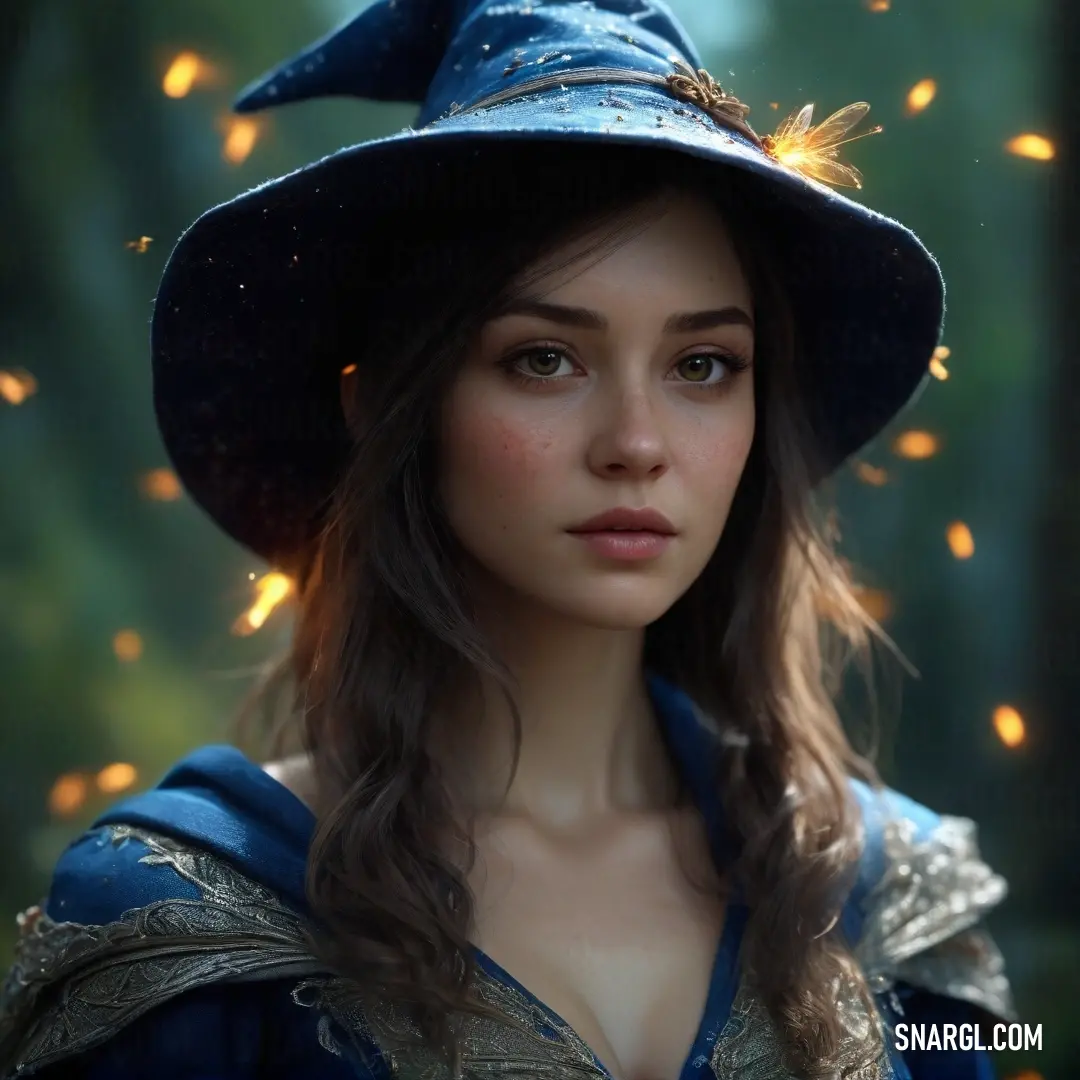
Wizard
Who is a Wizard?
Generally, a wizard is either:
A person who is skilled in magic or who has magical powers, such as a sorcerer or a magician.
Wizards are often depicted as wearing robes and hats, carrying wands or staffs, and casting spells.
Wizards are common characters in fantasy literature and games, such as Harry Potter, The Lord of the Rings, and Dungeons & Dragons.A person who is very good at something, especially a technical or intellectual field.
Wizards are admired for their expertise and creativity, and may be called geniuses or prodigies.
For example, someone who is a wizard at math can solve complex problems with ease.
Example of the color palette for the image of Wizard

See these colors in NCS, PANTONE, RAL palettes...
What does a Wizard look like?
There is no single way to describe how a wizard looks like, as they can vary in appearance depending on their culture, personality, and style.
However, some common features that many wizards share are:
A long robe or cloak, usually in dark or bright colors, that may have symbols or patterns related to their magic.
A hat, often pointed or wide-brimmed, that may also have decorations or ornaments.
A beard or a mustache, especially for older or more experienced wizards, that may be long, curly, or braided.
A pair of glasses, spectacles, or goggles, that may help them see better or protect their eyes from magical effects.
A belt, pouch, or bag, that may contain various items or tools for their magic, such as potions, scrolls, crystals, or herbs.
A staff, wand, or rod, that may serve as a focus or a channel for their magic, or as a weapon or a tool.
A ring, necklace, or bracelet, that may have magical properties or significance, such as enhancing their power, protecting them, or identifying them.
Example of the color palette for the image of Wizard

See these colors in NCS, PANTONE, RAL palettes...
How does a Wizard dress?
If you want to dress like a wizard, you need to pay attention to the following aspects of your clothing:
Robe: A robe is the most essential part of a wizard's attire.
It should be long, flowing, and preferably in dark colors like blues and purples.Cape: A cape is another important element of a wizard's look.
It should be full length and have pleated shoulders.
You can choose a cape that matches your robe, or contrast it with a different color or pattern.Shoes: Wizard shoes should have a serious and archaic look to them.
You can wear black or dark colored boots, or wooden clogs.Accessories: To complete the wizard outfit, you will need accessories to show off your magical prowess.
For example, a long belt around your waist, or a sash over your shoulder, and a hat - pointed or wide-brimmed, and of course a wand.
A wand should be about the length of your arm, and have some kind of handle or decoration at the end.
You can also find some inspiration from the wizarding world of Harry Potter, where wizards have different styles depending on their personality and preferences.
Have fun dressing up as a wizard!
Example of the color palette for the image of Wizard

See these colors in NCS, PANTONE, RAL palettes...
What is a female Wizard called?
A female wizard is called a witch
But not all witches are the same
Some are good and some are bad
Some are wise and some are mad
Some practice magic with a wand
Some with herbs or a cauldron
Some with runes or a crystal ball
Some with nothing but their call
Some are old and some are young
Some are silent and some are sung
Some are feared and some are loved
Some are cursed and some are blessed
A female wizard is a witch
But a witch is more than just a word
She is a woman with a power
That can heal or can devour
Example of the color palette for the image of Wizard

See these colors in NCS, PANTONE, RAL palettes...
Are Wizards good or bad?
One way to approach this question is to look at the definition of the word "wizard".
A wizard is "one skilled in magic" or "a very clever or skillful person".
This means that being a wizard is not a matter of morality, but of ability and knowledge.
A wizard can use their magic or skills for good or evil purposes, depending on their personality, values, and goals.
Therefore, wizards are not inherently good or bad, but they have the potential to be either.
Another way to approach this question is to look at some examples of wizards in popular culture and literature.
For instance, in the Harry Potter series by J.K. Rowling, wizards are divided into two main factions: the good ones who fight for justice and peace, and the evil ones who follow the dark lord Voldemort and seek to oppress and harm others.
The main character, Harry Potter, is a boy wizard who has to face many challenges and dangers in his quest to defeat Voldemort and his followers.
In this case, wizards are clearly distinguished by their moral choices and actions, and the good ones are celebrated and admired, while the bad ones are feared and despised.
Another example is the Lord of the Rings trilogy by J.R.R. Tolkien, where wizards are rare and powerful beings who have a great influence on the fate of Middle-earth.
The most prominent wizards are Gandalf and Saruman, who are both members of the order of the Istari, sent by the Valar (the god-like beings of the world) to help the free peoples against the evil Sauron.
However, while Gandalf remains faithful to his mission and becomes a leader and mentor to the heroes of the story, Saruman is corrupted by his desire for power and knowledge and betrays his allies and joins forces with Sauron.
In this case, wizards are shown to have a great responsibility and accountability for their actions, and their choices have significant consequences for themselves and others.
In conclusion, wizards are not necessarily good or bad, but they are often portrayed as having a strong impact on the world and the people around them.
Therefore, their moral character and decisions are important and relevant, and they may be judged accordingly by the readers or viewers of their stories.
Example of the color palette for the image of Wizard

See these colors in NCS, PANTONE, RAL palettes...










 Dark jungle green
Dark jungle green Pastel orange
Pastel orange Medium sea green
Medium sea green Moss green
Moss green Copper
Copper






 Arsenic
Arsenic Slate gray
Slate gray Light blue
Light blue Dark tea green
Dark tea green



 Cafe noir
Cafe noir Old lavender
Old lavender Bronze
Bronze Pastel gray
Pastel gray Orange Yellow
Orange Yellow




 Tumbleweed
Tumbleweed Medium turquoise
Medium turquoise Umber
Umber Deep lilac
Deep lilac



 Bistre
Bistre CG Blue
CG Blue Arylide yellow
Arylide yellow Bright turquoise
Bright turquoise Light brown
Light brown





